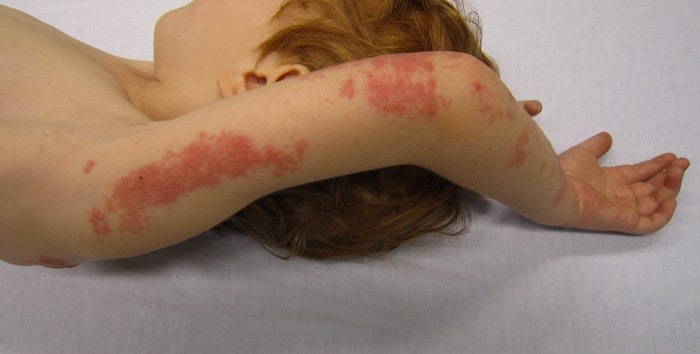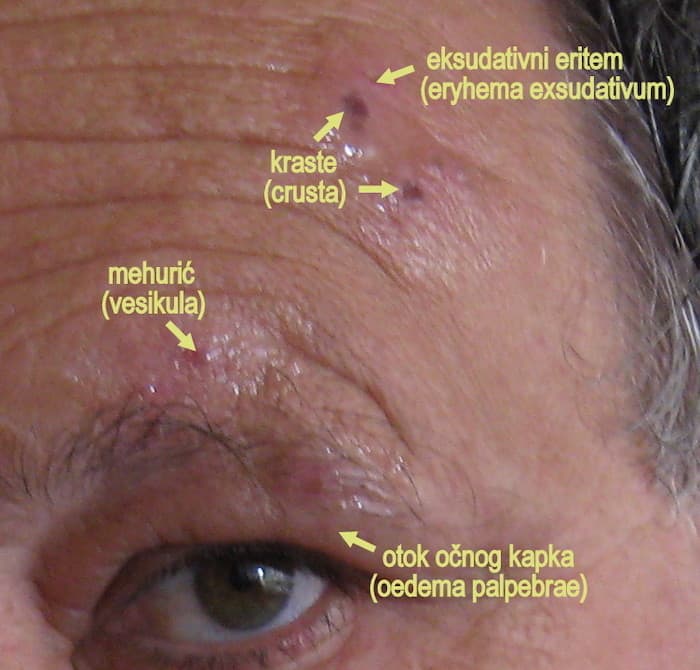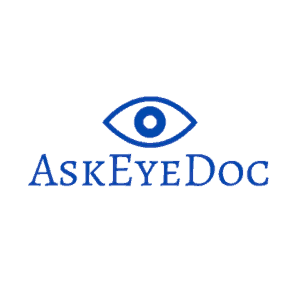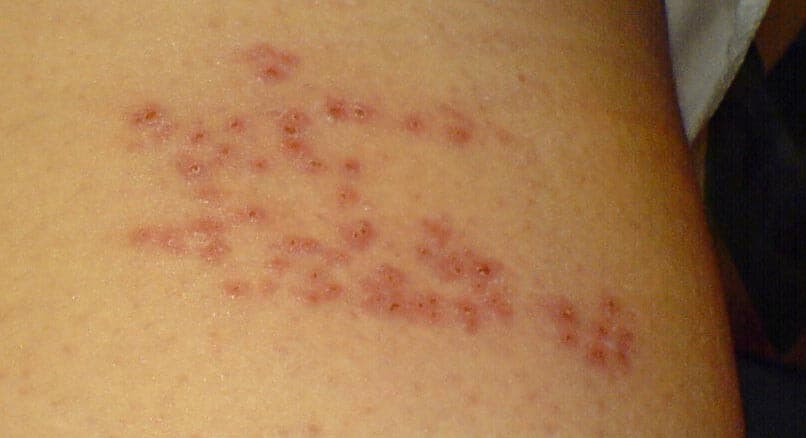Written by: Dr. Stephanie Mulick, O.D.
On Avereage, shingles occur in people over the age of 50. Anyone who has had chickenpox as a child (which is 90% of the population over the age of 40) can get shingles. The reason being is that shingles are a latent form of the chickenpox virus called the varicella-zoster virus.
As a child, you may recall having chickenpox. I remember the itchy blisters on my skin. Unfortunately, my father also got chickenpox at that same time and it was horrible for him. He even had lesions on his lips (poor dad).
Once chickenpox clears up it continues to live on the nerve cells and can one day re-activate in the form of Shingles. According to the CDC, only about 1 in 3 people who have had chickenpox will ever develop shingles.

Risk Factors for Shingles
- Increased age: about half of the cases of shingles are people age 60 or over.
- Decreased immune response: a weakened immune system can make you more susceptible to developing shingles.
- Stress: has been shown to weaken the immune system.
- Steroid usage
Are Shingles Contagious?
The Varicella-Zoster Virus is contagious.
If you have NOT had Chickenpox or a vaccine for Chickenpox then you are at risk for contracting the Varicella-zoster virus from someone who has active Shingles. This could cause you to get Chickenpox, not Shingles.
If you have Shingles stay away from anyone who may not be vaccinated for Chickenpox or who has never had Chickenpox.
The Varicella-zoster virus can be transmitted through direct contact with the open sores. Once the shingles’ blisters scab up you are no longer contagious.
The sooner you get treated the faster the symptoms will resolve.
If you have the Shingles blisters it is best to keep them covered with a loose soft shirt. If the shingles affect your face it will be difficult to keep covered.
Symptoms of Shingles:
- Flu-like symptoms
- Itchy rash on one side of the face, arm or body
- Burning skin
- Muscle ache on one side of the body
- Sensitive skin on one side of the body
- Severe pain on one side of the body
The symptoms can vary from mild to severe. Shingles are typically unilateral, meaning that it usually affects one side of the body or face.
Treatment of Shingles
Shingles are typically treated with oral prescription medications called anti-virals. If you have a rash then do not hesitate to see your doctor. The quicker you are treated the faster the symptoms will dissipate.
How to relieve symptoms of Shingles
- Cool Baths
- Avoid sun (since the rash burns, sun exposure can intensify this symptom)
- Over the counter pain reliever
- Stay hydrated (drink a lot of water throughout the day)
- Avoid swimming pools or jacuzzi’s
- Avoid saunas or steam rooms
- Avoid hot showers or baths
- Avoid scented or perfumed lotions
- Apply cool, moist compresses to help relieve pain and itching
- Corn starch applied to the rash in the form of a paste can help relieve itching
- mix 2 parts cornstarch with 1 part water
- leave on for 10 minutes then rinse
- Corn starch bath
- add 1 cup cornstarch to a lukewarm or cool bath
When to See a Doctor
If you have an itchy, painful rash, I would recommend seeing the doctor immediately. The sooner you get treatment the better.
If the rash is on your face, it is extremely important to visit your eye doctor. Unfortunately, this virus can affect the eyes and worst case can cause blindness. Early treatment is the best way to prevent unwanted side effects.

Shingles and the Eye
Unfortunately, there is a risk of shingles affecting the eye. If the shingles blister is near your eye, then see your eye doctor immediately. Using an eye ointment at bedtime can be helpful as a barrier while sleeping to protect the eye.
If the Shingles have affected your eye then anti-viral eye drops should be started to prevent scarring of the cornea, which can lead to decreased vision.
Again, the sooner you have treatment the better the outcome.
The Bottom Line
If you have had Chickenpox as a child and you develop a painful rash on one side of your face or body see your doctor right away.


